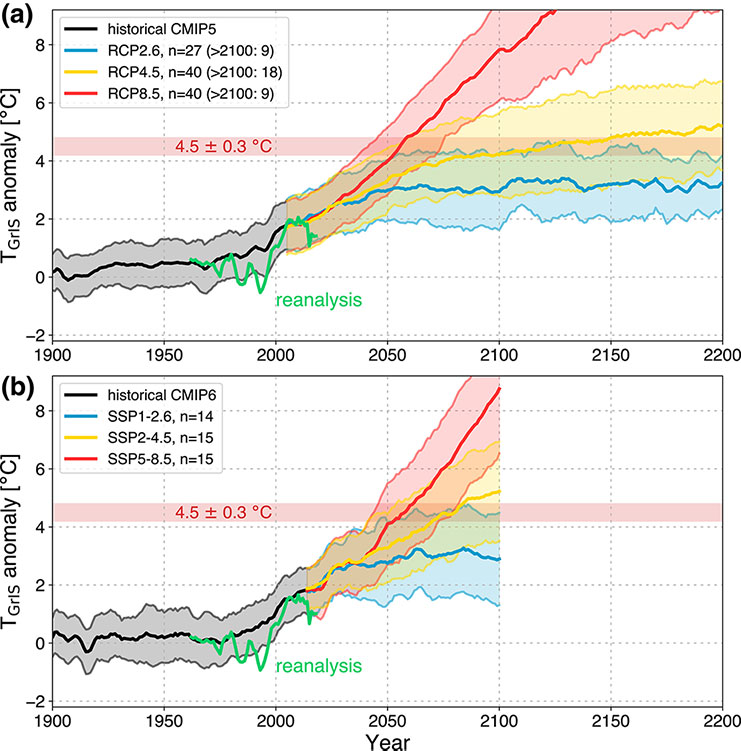 More than half of the current global sea level rise is attributed to the mass loss of glaciers, ice caps and ice sheets. Their surface mass budget reacts sensitively to changes in global climate. Given the vast glaciarized area in the world, in situ observations, however crucial, can only provide limited insight in the total surface mass budget of glaciers and ice sheets. Surface mass balance models provide the means to dynamically upscale these local observations.
More than half of the current global sea level rise is attributed to the mass loss of glaciers, ice caps and ice sheets. Their surface mass budget reacts sensitively to changes in global climate. Given the vast glaciarized area in the world, in situ observations, however crucial, can only provide limited insight in the total surface mass budget of glaciers and ice sheets. Surface mass balance models provide the means to dynamically upscale these local observations.
To that end an important part of our work is RACMO2, a regional climate model adapted for the use over ice sheets and glacier regions. RACMO2 is used to study the mass budget of the ice sheets of Greenland and Antarctica and several smaller ice caps. As a spin-off, we develop and operate IMAU-FDM, a firn model for detailed studies on firn processes, and in support of laser and radar altimetry. Finally, we are exploring ice-sheet and climate interaction using the global climate model CESM, the Community Earth System Model.
The work, studies and data listed on this site were funded through different projects by different programs of the European Union (such as EPICA and ice2sea) and the Netherlands Organization for Scientific Research (NWO) (e.g. the Open Program and the Netherlands Polar Program). We also thank the Royal Netherlands Meteorological Institute for their computational and scientific support, and the European Centre for Medium-Range Weather Forecasts (ECMWF) for their computational support.
Most recent data listed on this site are freely available upon request. Some of it is also available from our website through Zenodo links on our data page. Use of the data is unrestricted but acknowledgement of the data origin is appreciated (doi or otherwise). For data requests, more information, or comments please contact us using the email address below.
When requesting data, please add a small description of the project for which the data will be used. Note also that, when the provided data are used in peer-reviewed publications we ask for the opportunity to read the manuscript before submission to ensure proper acknowledgements towards our funding agency.
In the 1990s the KNMI developed in cooperation with the Danish Meteorological Institute the research model RACMO based on the High Resolution Limited Area Model (HIRLAM) numerical weather prediction model. In 1993 UU/IMAU started to modify the model such that it better represented the extreme conditions over glacier surfaces. At present RACMO version 2.4p1 is operational for Antarctica and the Arctic, and version 2.3p2 for Greenland.
The Community Earth System Model (CESM) is a global Earth system modelling framework developed by a consortium of universities and research institutes and lead by the National Center for Atmospheric Research (NCAR). UU/IMAU applies and contributes to the development of different components of the model, among which the ice sheets and their interaction with the atmosphere.
Firn processes such as melt percolation and refreezing play an important role in the reaction of the surface mass balance of ice bodies to climate change. The steady and transient states of the firn layer provide important information on these firn processes, firn air content, and surface elevation changes, and can be combined in time-dependent firn densification models. These models calculate temporal changes in firn depth and density, and surface height changes, by forcing them with time series of surface temperature, snowfall, sublimation and melt. The IMAU firn densification model calculates steady-state as well as time-dependent firn density profiles.